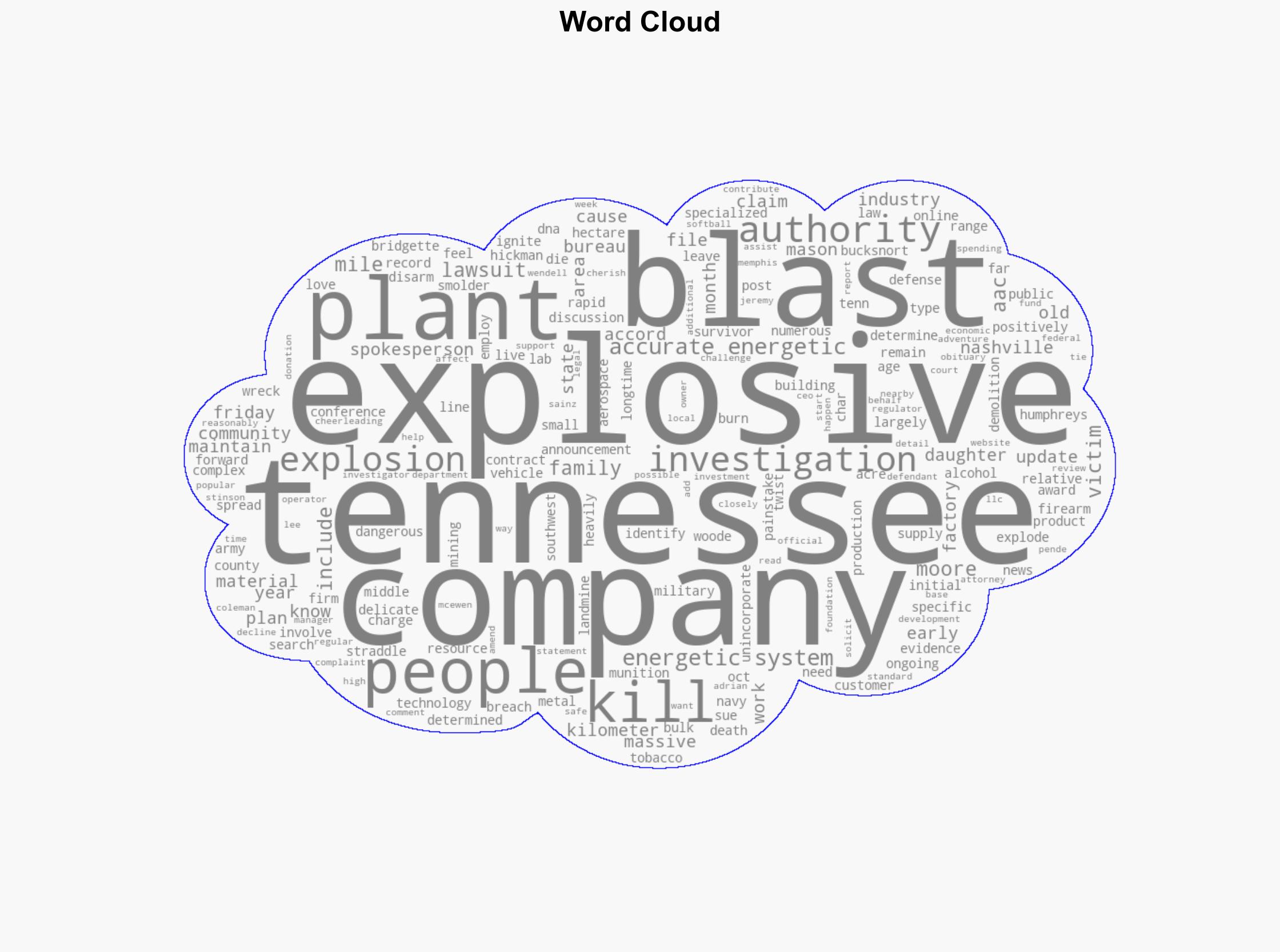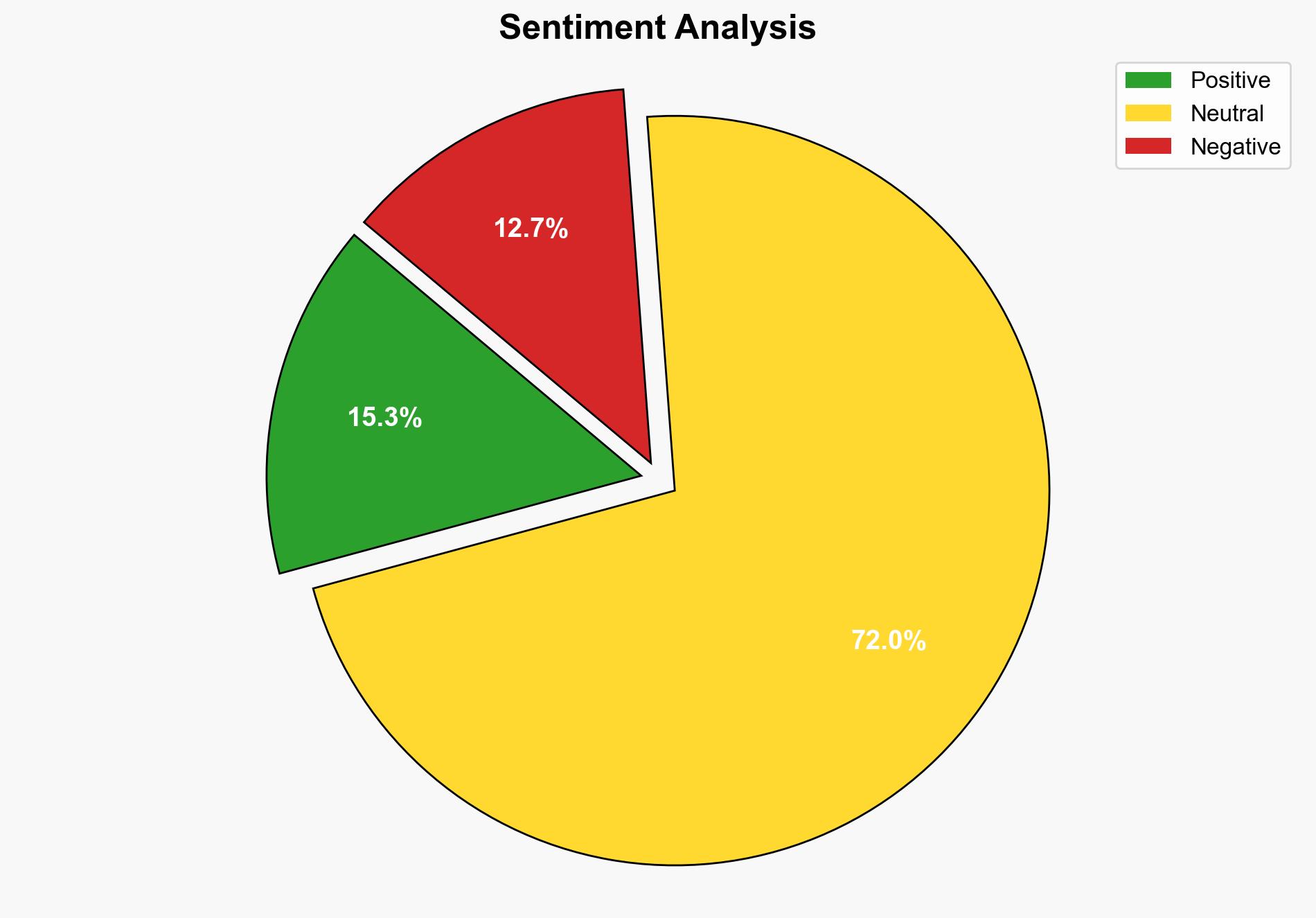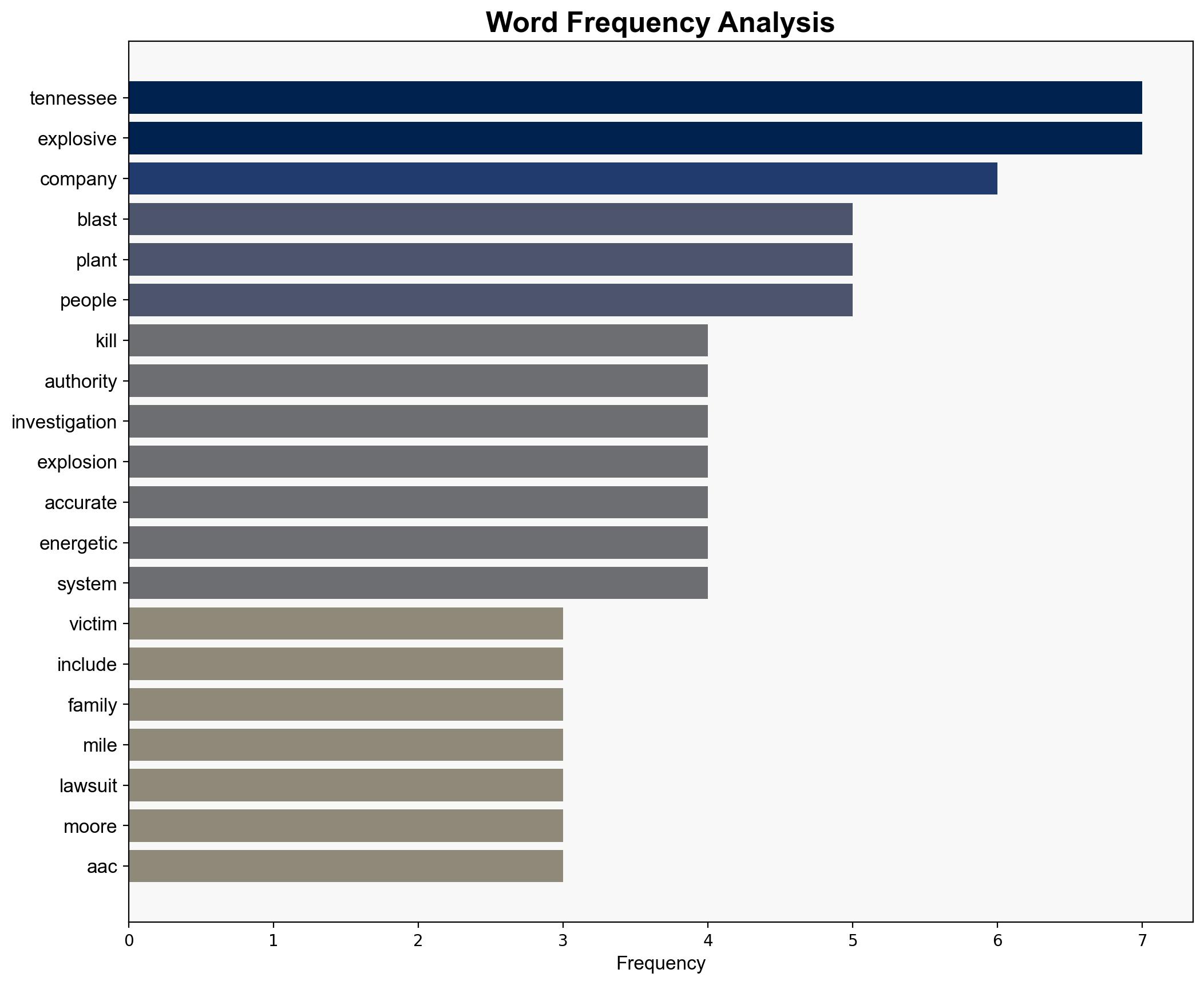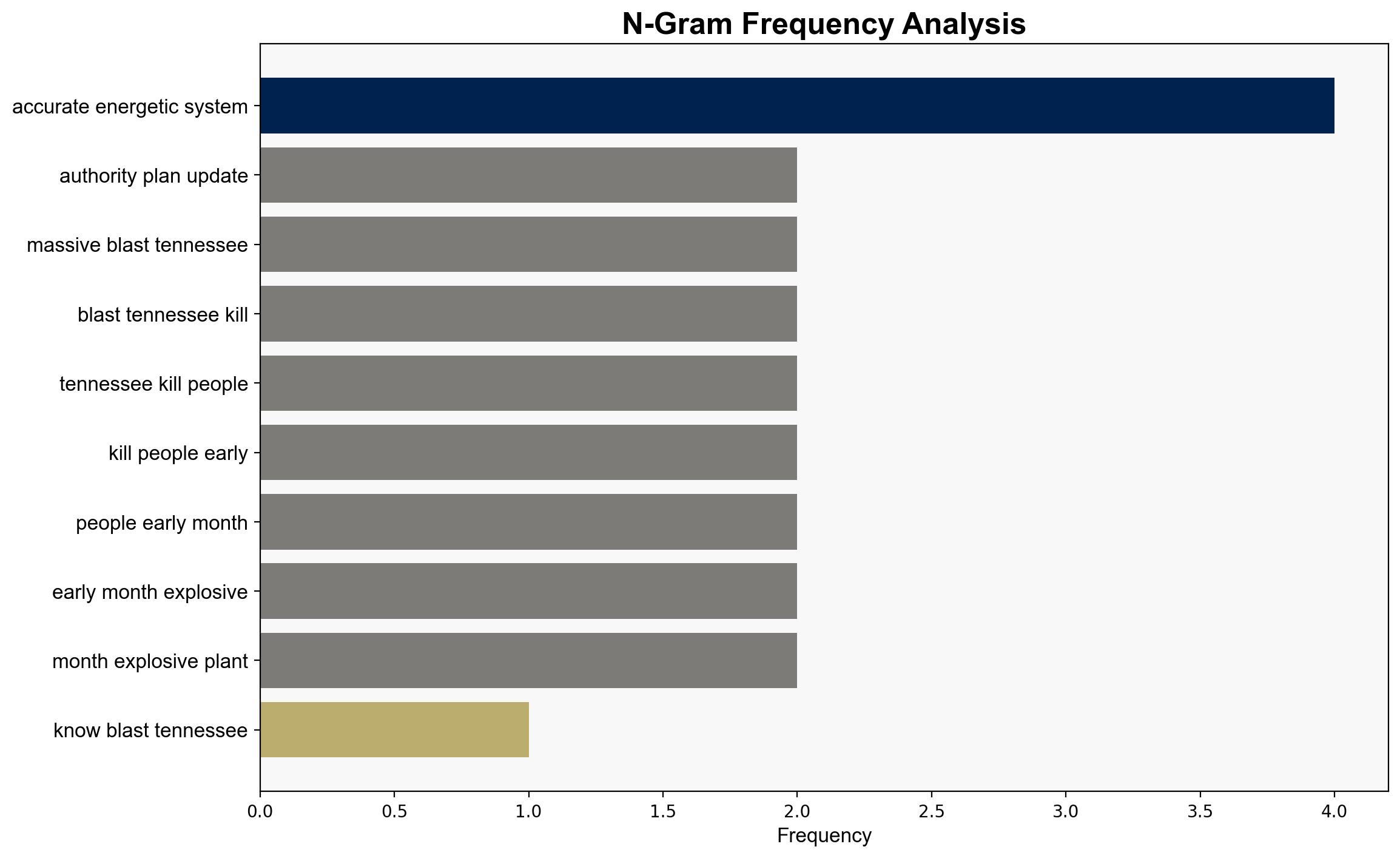What to know about the blast at a Tennessee explosives plant that killed 16 people – ABC News
Published on: 2025-10-24
Intelligence Report: What to know about the blast at a Tennessee explosives plant that killed 16 people – ABC News
1. BLUF (Bottom Line Up Front)
The most supported hypothesis is that the explosion at the Tennessee explosives plant was due to a failure in safety protocols or equipment malfunction. This conclusion is drawn with moderate confidence due to the ongoing investigation and lack of definitive evidence. Recommended actions include enhancing safety audits and regulatory oversight of similar facilities to prevent future incidents.
2. Competing Hypotheses
1. **Hypothesis A**: The explosion resulted from a failure in safety protocols or equipment malfunction. This hypothesis considers the plant’s history, the nature of its operations, and the involvement of hazardous materials.
2. **Hypothesis B**: The explosion was an act of sabotage or intentional destruction, possibly linked to external threats or internal grievances.
Using the Analysis of Competing Hypotheses (ACH) 2.0, Hypothesis A is better supported by the available evidence, such as the plant’s compliance with industry standards and the absence of immediate indicators of sabotage.
3. Key Assumptions and Red Flags
– **Assumptions**: It is assumed that the plant adhered to all safety regulations and that there were no prior warnings of potential sabotage.
– **Red Flags**: The rapid identification of victims using DNA technology suggests a well-prepared response, but it also raises questions about the speed and transparency of the investigation.
– **Blind Spots**: Potential internal grievances or external threats have not been fully explored, which could bias the investigation towards an accidental cause.
4. Implications and Strategic Risks
The incident highlights vulnerabilities in industrial safety and the potential for catastrophic outcomes in facilities handling explosive materials. There is a risk of reputational damage to the company and increased regulatory scrutiny across the industry. If sabotage is confirmed, it could indicate broader security threats to critical infrastructure.
5. Recommendations and Outlook
- Conduct comprehensive safety audits of similar facilities to identify and mitigate risks.
- Enhance intelligence-sharing mechanisms to detect and prevent potential sabotage or insider threats.
- Scenario Projections:
- Best Case: Improved safety measures prevent future incidents, restoring public confidence.
- Worst Case: Additional incidents occur, leading to stricter regulations and potential shutdowns.
- Most Likely: Incremental improvements in safety protocols and regulatory oversight.
6. Key Individuals and Entities
– Wendell Stinson, CEO of Accurate Energetic Systems
– Bridgette Mason, spokesperson for the Bureau of Alcohol, Tobacco, Firearms and Explosives
– Lee Coleman, attorney for the Moore family
7. Thematic Tags
national security threats, industrial safety, regulatory compliance, risk management





